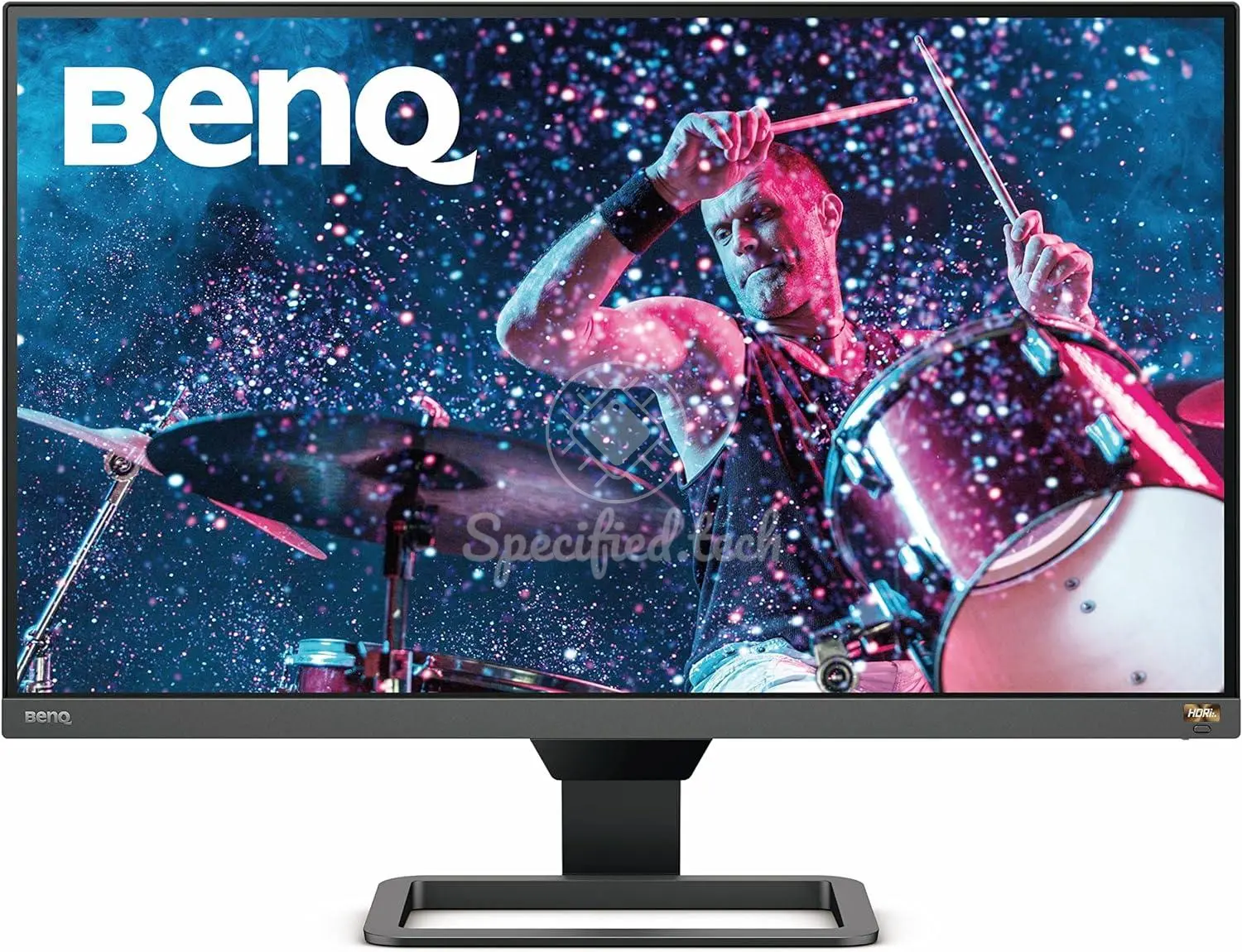
Display, power consumption, dimensions, technologies used, connections, certifications, comfort features. All these keywords can be relevant for a purchase decision, but an exact comparison is often difficult. For this reason, we will summarize as many of the mentioned specifications as possible in an understandable form in the course of this article. Let's start with the most important component of the EW2780Q from BenQ.
Display
Any multimedia content can be displayed on 27 inches ( 68.5 cm on the diagonal). As already known, two monitors with different outer dimensions can have the same screen diagonal. In the case of the monitor EW2780Q , we find an aspect ratio of 1.778 to 1. This means that for every 1 pixels in height, 1.778 pixels in width are added. For comparison: A classic CRT monitor had an aspect ratio of 4:3. The display is a IPS panel. The panel has a resolution of 2560 x 1440 px. The pixel density is 109 ppi. The pixel pitch is 0.233 mm. The continuous possible brightness specified by the manufacturer BenQ is 350 nt. The panel is illuminated by W-LED. The built-in panel ensures stable color reproduction of the image, even at deviating viewing angles, by means of its 178 ° (horizontal) viewing angle. BenQ promises stable color reproduction moreover within a 178 ° vertical angle. Vertically, however, the image renews at a minimum rate of 60 hz up to 60 hz. The minimum response time of the monitor is ms. The display panel is Anti-glare/Matte. The 'Adaptive Brightness' technology of the EW2780Q monitor provides automatic adjustment of the screen brightness to enable comfortable viewing. This feature ensures that the screen always stays within a comfortable brightness range, minimizing eye strain.
Color representation
The panel has a bit depth of 8 per color channel, but what does that mean? The number of bits determines how many colors can be encoded for the individual pixels of the display. For an 8-bit panel, for example, this is 256 different colors (2^8 = 256). However, since we usually display three different colors per pixel at the same time, in theory about 16 million (256^3) different colors are possible by mixing the three pixels. A 10-bit panel could even display a billion colors. According to the manufacturer, the coverage of the SRGB color space is 99 %.
Contrast ratio
Contrast ratio is a common measurement used to represent the maximum relative differences in brightness between black and white. It describes the ability of a screen or projector to produce a high-contrast image and is the quotient of the maximum and minimum displayable luminance. The higher the values are away from each other, the stronger the quantitatively seen difference between black and white is set up, which in turn results in an improved image quality. This monitor from BenQ has a static contrast ratio of 1000 : 1 , according to the manufacturer. In contrast to the static contrast ratio, the dynamic contrast ratio changes the brightness of the panel itself in addition to the difference measurement from black to white. In addition to the difference between the brightest and the darkest pixel, the backlight is thus changed. Since the brightness of the panel may not be able to be adjusted exactly to a single pixel, a so-called halo effect is possible. The value of 20000000 : 1 of dynamic contrast ratio for the monitor EW2780Q cannot provide any information about the severity of the halo effect here. Therefore, it is more useful to compare the static contrast ratio.
HDR
The monitor supports all HDR modes listed here:
- HDRi
screen design
The size of the EW2780Q on the desk is likely to be particularly relevant for most users. BenQ specifies a space requirement of 46.1 x 61.4 x 19.6 cm (HxWxD) with the included stand. The device weighs in total (i.e. also measured with the stand) 6 kg.
Rotate, tilt and swivel
The monitor from BenQ cannot be rotated. The monitor cannot be swiveled. This feature could be retrofitted with a third-party stand. Thanks to the tilt function of the EW2780Q monitor, the screen position can be flexibly adjusted to minimize dazzling light sources and ensure optimum visibility. The angle of inclination to the rear is 15. The monitor can be tilted forward by 5 degree.
Ports
The connection of a device via display port is supported.
camera
This monitor does not have a camera.
Loudspeaker
The monitor from BenQ has integrated speakers, for playing sounds, music or speech. The sound is emitted via 2 speakers, which are integrated into the device. Each of the built-in speakers has a contingent of 5 w power.
Features
- Flicker Free: BenQ 's Flicker Free technology minimizes distracting screen flicker, allowing you to work and/or play longer without restrictions.
Anyone who works a lot on the computer spends many hours a day in front of the screen. Excessive screen work can damage the eyes. This effect can be particularly pronounced during the darker hours and in the winter months. Many monitor manufacturers have now reacted and offer technologies and settings to reduce the blue component, which is primarily controversial. Depending on the manufacturer, these can be called "Low Blue Light", "Low Blue Light Technology", "SoftBlue" or even "Eye Saver Mode" and function differently. However, it is only important that BenQ offers a technology to reduce the blue content in its monitor EW2780Q.
Power consumption
On average, the monitor consumes approximately 52 w. In ECO mode, the monitor consumes 24 w. The monitor can be operated on a 110v power supply. The monitor can be operated on a 220v power supply. The power grid has to supply a frequency of 50 hz to 60 hz.
Packaging
The box together with the monitor weighs about 7.9 kg.
Further information
- 100x100

